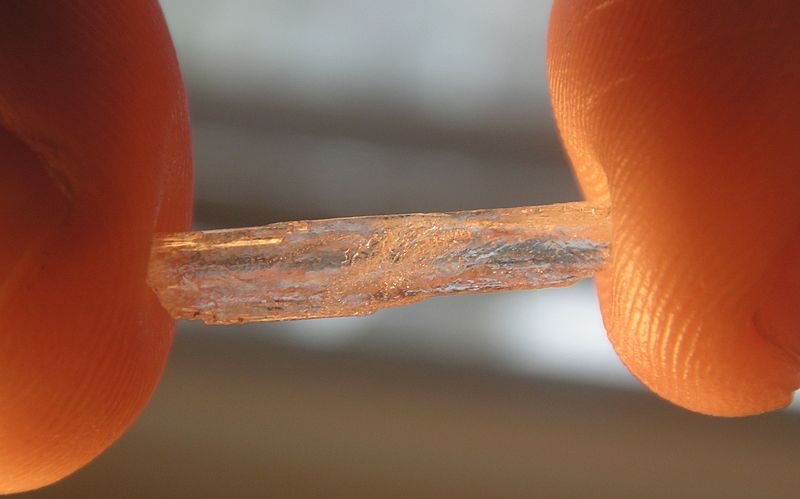
The series finale of the TV show "Breaking Bad" airs this Sunday (Sept. 29). For five years, viewers have watched Walter White's descent from mild-mannered chemistry teacher to drug kingpin as he manufactures methamphetamine.
Although the show depicts the bizarre side of the meth industry, the real-world history of meth is much stranger. From its use by the Nazis as a war aid to its variant "Smurf dope," here are six strange facts about methamphetamine.
Meth history
In 1887, scientists first isolated the chemical ephedrine from a shrub called Ephedra sinica, which had been used in Chinese medicine for thousands of years. In 1919, chemists manufactured methamphetamine by combining the plant's active chemical with red phosphorous and iodine.
People soon noticed the stimulant's appetite-suppressing, mood-boosting, and focus-inducing properties. In World War II, Adolf Hitler distributed methamphetamines to soldiers to boost morale and help keep soldiers alert. And during the 1950s, amphetamine was a component of a popular diet pill that housewives used to keep slim. [7 Diet Tricks That Really Work]
Home cooking
Unlike cocaine, heroin and marijuana, in which the drug's key ingredient is primarily harvested from crops, producing methamphetamine requires transforming precursor drugs. Compounds such as ephedrine or pseudoephedrine, the active ingredients in decongestants such as Sudafed, must undergo chemical reactions to become the illicit drug.
Sign up for the Live Science daily newsletter now
Get the world’s most fascinating discoveries delivered straight to your inbox.
Only a handful of laboratories around the world make these chemicals at any scale, according to a 2011 "Frontline" documentary on the meth epidemic. Huge quantities of meth are produced by Mexican drug cartels in superlabs.
But "freelancers" who make the drug at home steal decongestants from pharmacies and combine them with toxic solvents and chemicals in dangerous home labs. The chemicals used to manufacture meth are volatile and can lead to explosions, and the toxic waste left behind is extremely difficult to clean up.
Blue myth?
On the show "Breaking Bad," Walter White's trademark drug is so pure, it looks like powder-blue rock candy. In reality, pure meth is typically white or clear, because it reflects all wavelengths of visible light.
Purity is a measure of how uniform the chemical composition of the drug is, and even tiny amounts of impurities can add color to the drug. However, blue meth itself isn't a myth. Several years ago, drug dealers began selling "Smurf dope," or methamphetamine that has been tinged with a pigment or dye to appear blue, USA Today reported.
Smurf dope has the same chemical activity as the less colorful, white variety.
Similar drugs
Methamphetamine is a cousin of stimulants routinely prescribed to children who have attention deficit hyperactivity disorder (ADHD). Amphetamines such as Adderall and Ritalin have similar effects as methamphetamine, and the body actually metabolizes methamphetamine into amphetamine.
However, because illicit meth has undergone a process called double methylation (as opposed to being methylated just once), it is processed in the body more quickly and powerfully.
Meat connection
Meth has plagued Midwestern states such as Missouri, Kentucky and Tennessee. Experts say meth got a foothold in the heartland in part via industrial meat processing plants.
Jobs in these factories are among the most dangerous and physically taxing in America: Workers have to "process" chickens, cows or pigs at a blistering rate (up to 140 chickens per minute, according to current USDA rules). Meat processing workers came to rely on meth in order to be quicker, sharper and more alert, according to Nick Reding's book "Methland," (Bloomsbury USA, 2009).
The same plants play a role in Mexican drug organizations' distribution networks, as migrant workers who move across the country from plant to plant can spread the drug, according to the book.
Ugly effects
Long-term methamphetamine use has some ugly side effects. Chronic use constricts and eventually destroys blood vessels, inhibiting the body's ability to repair tissue and aging skin. Meth users also sometimes hallucinate that insects are crawling under their skin, leading them to pick at their skin until small sores form.
In addition, meth dries out the salivary glands, which makes it easier for mouth acids to erode tooth enamel and the gums, allowing cavities to gain a foothold. Addicts' habit of teeth-grinding, combined with a hankering for sweet foods during meth highs, only worsen the problem. That leaves many users with rotted teeth and the characteristic "meth mouth" shown in many anti-drug campaigns.
Follow Tia Ghose on Twitter and Google+. Follow LiveScience @livescience, Facebook & Google+. Original article on LiveScience.

Tia is the managing editor and was previously a senior writer for Live Science. Her work has appeared in Scientific American, Wired.com and other outlets. She holds a master's degree in bioengineering from the University of Washington, a graduate certificate in science writing from UC Santa Cruz and a bachelor's degree in mechanical engineering from the University of Texas at Austin. Tia was part of a team at the Milwaukee Journal Sentinel that published the Empty Cradles series on preterm births, which won multiple awards, including the 2012 Casey Medal for Meritorious Journalism.









